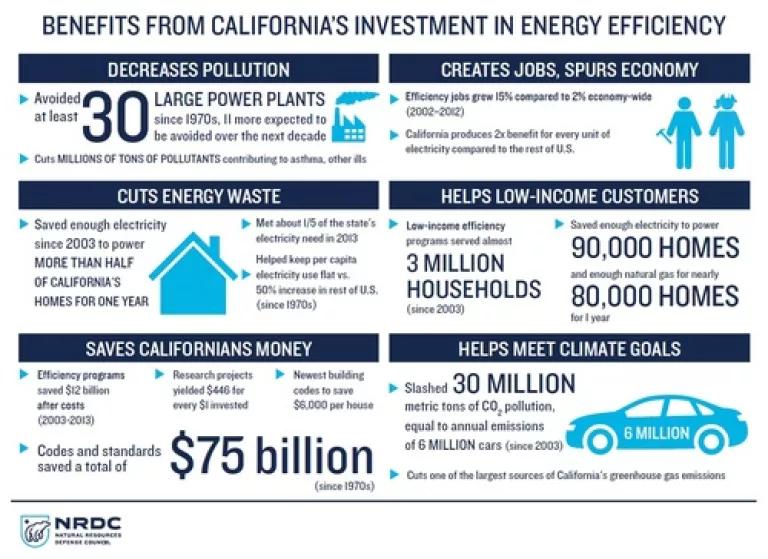
Senate Bill 350 will double our current goals (yes, that is a 100% increase) for energy savings in California's homes, businesses, and factories - an ambitious but achievable target that will boost the state's ability to reduce climate pollution. California legislators are headed home this evening after a tumultuous legislative session with this truly significant energy efficiency policy headed to Governor Jerry Brown for his signature to become law.
As NRDC recently illustrated in California's Golden Energy Efficiency Opportunity, this legislation builds upon California's past leadership and experience. SB 350 sets targets for California to double the energy efficiency in the residential, commercial and industrial sectors while also increasing our share of electricity from renewable sources to 50 percent by 2030.
This package of clean energy initiatives that puts into law what Governor Brown called for in his 2015 inaugural speech will create jobs and reduce carbon emissions from electricity generation - alleviating health costs and climate pollution impacts.
California's energy efficiency efforts already have saved Californians nearly $90 billion on their energy bills since the 1970s and slashed electricity demand enough to avoid 30 large power plants (with 11 more expected to be averted over the next decade even without this new legislation). In fact, California's electricity bills - consumers' bottom line total costs - are among the lowest in the country, due in part to efficiency.
Energy efficiency impacts of SB 350
By our estimates, achieving the level of energy savings set by SB 350 will reduce our total statewide electricity needs by about 25 percent, and reduce our natural gas needs by about 10 percent below the demand projected in 2030. Half of those saving were already in the works through existing policies, while the other half will be mandated by SB 350.
This means that by 2030 energy efficiency programs offered by utilities to help customers optimize their energy use, stronger energy standards for buildings and appliances, and other initiatives will save approximately:
- 89,000 Gigawatt hours (GWh) of electricity annually, which is equivalent to the electricity required to brew about 5 trillion cups of coffee, or almost 400 cups per Californian per day; and
- 1,300 million therms (MMth) of natural gas annually, which is equivalent to the natural gas required to provide about 13 billion hot showers every year.
Still more energy efficiency progress in California with AB 802
In addition to SB 350, the legislature also passed Assembly Bill 802, a bill that:
- Enables energy efficiency programs to bring existing buildings up to the current California efficiency standards and beyond, and to reduce energy use through operational and behavioral improvements;
- Ensures that commercial and multifamily building owners are able to access their buildings' total energy usage data to better manage their buildings, benchmark their properties, and make better-informed efficiency and renewable energy investments; and
- Creates a clear and transparent benchmarking program that allows large building owners to compare their buildings' energy use to similar buildings, and more easily identify opportunities for saving energy.
Today was a great day for energy efficiency in California. Some of the historic benefits of efficiency are described in this infographic. Expanding these benefits and ramping up efficiency to the levels called for in SB 350 will require a significant transformation of our current energy efficiency programs and processes. But we can do it, bolstered by today's bold action in Sacramento.


